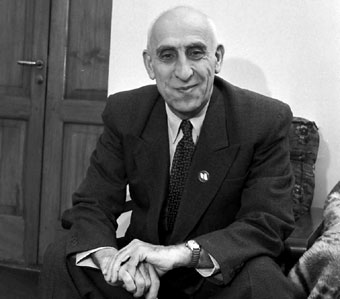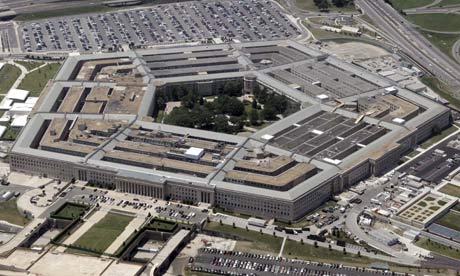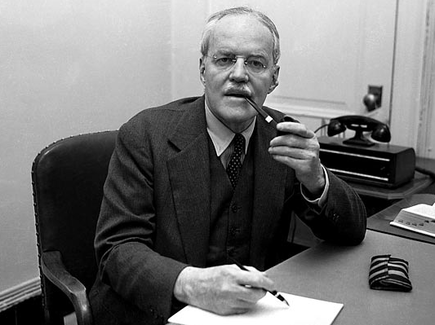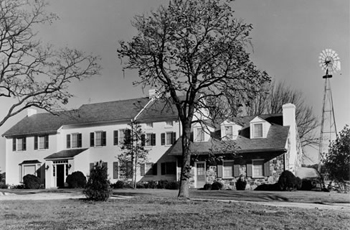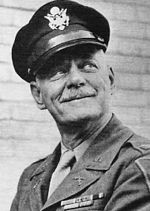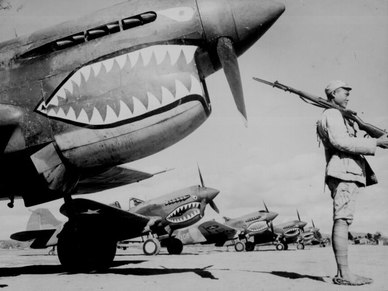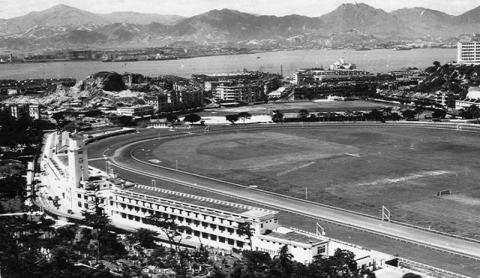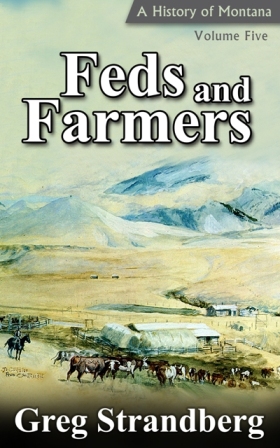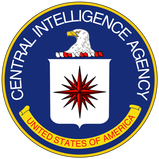
In 1943 the U.S. government set up a military base in Iran and signed the Tehran Agreement, something that said which powers would get which lands around the world. Overall, the main American oil companies at that time got a great deal, as did British oil companies like BP.
By the 1950s the Iranian people were getting fed up with Western control of their resources. Oilfield workers began banking on the people’s frustrations and formed the Tudeh Party, which soon had the support of the National Front Party.
This allowed their candidate, Mohammed Mossadegh, to be elected Prime Minister of the country. He announced that he’d be nationalizing BP in the country, sending Big Oil into a tizzy.
First the CIA got together with their British counterpart, MI6, and initiated a “smear campaign” to paint Mossadegh as a communist, even though he’d been just as vocal that the Soviets leave Iran as he was that the Western powers do so. The Iranian people knew this and weren’t buying the propaganda.
It was clear that more direct action would need to be taken, like the Dulles brothers had used during their WWII days. Back then they’d been part of the OSS, the Office of Strategic Services, which had served as the precursor to the CIA.
The Office of Strategic Services
They also had an extensive network in Turkey. When the war ended, however, much of the organization disappeared. The OSS ceased operations on September 20, 1945, with many of the people and material going to the Department of War and the Department of State.
The Department of War actually disbanded in 1947, the disparate elements going to various military branches before the Department of Defense was created in 1949. It would largely be housed in the Pentagon, which had begun construction in 1941 and finished in 1943.
“Many of the early leaders of the CIA were OSS veterans and devoted themselves to consolidating and entrenching their new vehicle for influence in Washington. They also passionately believed that they were people with a self-appointed mission of world-shaking importance and that, as a result, they were beyond the normal legal restraints placed on government officials.”
The Central Intelligence Agency
“It was the fifth function – lodged in a vaguely worded passage that allowed the CIA to ‘perform such other functions and duties related to intelligence affecting the national security as the National Security Council may from time to time direct’ – that turned the CIA into the personal, secret, unaccountable army of the president.”
It all came down to the Eastern European nations that were quickly coming under Soviet sway, and many were worried that Western European countries would soon follow. Worried in Washington, D.C., that is – few in Montana would have cared if the media wasn’t cramming the unjustified fears down their throats.
A total of $65 million was spent to buy these politicians, including “every Christian Democrat who ever won a national election in Italy,” according to Weiner. If the dark money paths in America weren’t quite working, it wasn’t a problem. “The CIA secretly skimmed the money it needed from Marshall Plan accounts,” Weiner tells us.
“After the Plan ended, secret funds buried in the annual Defense appropriation bill continued to finance the CIA’s operations.” When done in Italy, the CIA moved on to Japan, where it funded Prime Minister Nobusuke Kishi from the late-1950s into 1960. With CIA money and influence, Japan became a one-party state, the Liberal Democratic Party firmly entrenched.
The CIA’s first director had been Rear Admiral Sidney W. Souers, who served for less than six months in 1946. After that three other high-ranking members of the military held the post until Allen Dulles was appointed in February 1953.
Allen Dulles had been in charge of the OSS during the war, and he’d also been a lawyer for I.G. Farben, a “Nazi combine” that supplied oil and poison gas to Hitler’s war and genocide machine. After the war and his OSS service, Allen Dulles had headed over to Switzerland and became the agency’s station chief there.
That location made it easy for him to move “Hitler and Goebel trusts into Swiss bank accounts” with the help of Francois Genoud, a known Swiss Nazi. Genoud would later go on to supply arms to the Algerian Liberation Front that fought France in the 1950s, and to Palestine so they could fight Israel in the 1960s.
By 1952 Allen Dulles had ingrained himself enough in Switzerland, and built up enough money with his clandestine dealings, to open the Banque Commerciale Arabe, based out of Lausanne. This bank had a deep relationship with both the CIA and the Muslim Brotherhood, “which is comprised of Saudi royal family members.”
This program had no government oversight and preyed on American citizens on American soil, using mind control techniques, which primarily consisted of giving the drug LSD to unsuspecting victims. One of the main goals of the program was to create “a mind-controlled assassin to be utilized for CIA black operations.”
The 1953 Iranian Coup
The CIA was a paranoid organization. Its previous incarnation – the OSS – had been taken apart after WWII, and it’d never earned the respect of Washington, D.C. insiders. The agency’s first leaders realized they were in a precarious position, so they sought funding for a new organization to back them up.
That’s how the National Security Agency, or NSA, came about. It started as “an eavesdropping and cryptological unit” in 1952, mainly so that the CIA could get information about what was happening in North Korea, a country that proved impervious to spies. Not to be outdone, the Pentagon created the Defense Intelligence Agency, in October 1961.
This largely came about because of the abject and humiliating failure of the Bay of Pigs invasion that April. It was still plainly clear to Washington, D.C. insiders that the CIA was not up to snuff.
Big Oil and the international bankers felt differently, however, and were the main backers of the CIA. They knew that the agency was the private army of the president, and they knew that it would be sent to do their bidding.
More and more, that bidding was to secure lucrative oil deals with unfriendly Middle Eastern nations. Sometimes war was necessary to secure those deals, and why not? War had always been a profitable venture for Big Oil.
That second breakup had actually been good for the Rockefellers, as they had a 20% stake in all the new companies created, thirty-three of them. By WWII the family had 20% of Exxon, over 16% of Mobil, and just over 11% of Amoco. Those were the main American oil companies.
This at a time when oil was becoming a dominant product in the country, used in just about everything, or at least the production and transportation of everything. Without oil, the country simply couldn’t function, not with the systems that had been put in place, systems dependent on oil.
It had looked like the oil companies were conspiring again and edging out competition while raising prices. That was the ruling of the Federal Trade Commission in 1952 when they put out a report called “The International Petroleum Cartel.”
The report spurred the Justice Department to start an anti-trust case, but in 1953 – just ten days before the CIA coup in Iran – President Eisenhower “dismissed the FTC case on security grounds.” What’s more, the American oil companies were given “immunity from prosecution under anti-trust law.”
In addition to this, Secretary of the Treasury Robert Anderson “enacted a quota system limiting oil imports,” historian Dean Henderson writes, something that “helped Big Oil knock out their smaller US competitors.”
In return for this ruling, Eisenhower was rewarded with a free, 576-acre farm in Pennsylvania, right near Gettysburg. The retirement home was provided by Sid Richardson and Clint Murchison, two “Texas oil billionaires” that were invested in the same oil fields as the Rockefellers.
Baron Reuter’s mining company had turned into the Anglo-Persian Oil Company, then the Anglo-Iranian Oil Company in 1935. That’s the year Persia became Iran, a name change that came about at the behest of the Iranian ambassador to Germany. Iran was to evoke Aryan, the master race that Hitler was so fascinated with.
Iran had been enamored with Germany during the war and after the war the country was wary of the West. They nationalized the oil companies in 1951 instead of signing a new deal.
The British were furious. What hurt BP would hurt English citizens. A plan was created to overthrow democratically-elected Mohammad Mossadegh in a coup and install Shah Mohammed Reza Pahlavi in his place.
The coup took place in August 1953 and was financed by former OSS member’s bank, Deak & Co. No company traded more gold or more currencies in America than Deak and Co., and that made them the perfect financier for covert operations where lots of different currencies might be required, or hard money that was good no matter where you lived.
The CIA masterminded-coup was called Operation Ajax, and led by Teddy Roosevelt’s grandson, Kermit Roosevelt, as well as Herbert Norman Schwarzkopf, the father of the famous Gulf War general.
The one pulling the puppet strings, Allen Dulles, was seated right beside him on the ride in. In August 2013, 60 years after the events, the CIA finally came clean and admitted it had both planned and committed the coup in Iran.
By 1954, BP as we know it today came about through a 40% stake in Iranian Oil Participants Ltd., a holding company created after CIA coup that installed their western puppet.
Kermit Roosevelt would stay on in Iran for the CIA and oversee that puppet, and he also got another job, working for military aircraft producer Northrop Corporation. Following the coup it was clear to him that the new Shah would need some serious protection. After all, the people of Iran hated him and wanted him gone. Together with the Israeli intelligence service, called Mossad, the CIA started up SAVAK, or the Organization of Intelligence and National Security.
Together the two agencies – the CIA and SAVAK – ruled the Persian Gulf region with an iron first, ensuring their oil cartel would remain, and profits would continue to flow to their overseas banks.
Life in Iran deteriorated substantially, and between 1957 and 1979, “Iran housed 125,000 political prisoners.” At the same time, Iran became a food exporter, something that hurt its people.
In 1961, “79% of Iranian agriculture was for domestic consumption,” but by 1971 just 50% was. Farmers were forced to cities as they lost their livelihood.
In 1963 Iran had had more than 40,000 villages but by 1979 fewer than 10,000 remained. Animosity toward the West grew, and a reckoning would come.
The 1954 Guatemala Coup & 1958 Indonesian Snafu
Albert R. Haney was put in charge of the 1954 Guatemalan coup, and the only reason for that was his treatment of Allen Dulles’ wounded son during the Korean War.
Haney had gotten the boy home, and his early screw-up – he’d “dropped 212 foreign agents into Manchuria” after the Chinese had entered the war and “within a matter of days, 101 had been killed and the other 111 captured" - was forgotten. Haney redeemed himself by ridding Guatemala of its elected president, Jacobo Arbenze.
This was great for the United Fruit Company, but not so good for the people that lived there. At least 200,000 civilians died because of civil war over the next 40 years.
The CIA could do no wrong, it seemed, and in 1958 they were in Indonesia causing problems. They flew “supplies from Taiwan and the Philippines to aid army officers rebelling against President Sukarno,” Thomas Ross tells us in his book The Invisible Government. Unfortunately, an American B-26 bomber was shot down, an American pilot was captured, and the black operation was abandoned.
Eisenhower denied all knowledge of the events. The country would be lost to America until they staged another coup attempt there in 1965, one that succeeded. At least 500,000 people would die because of it.
China and the CIA Drug Money
The CIA had been in Laos since the late-1950s, “first employing missionaries and Thai commandos to train and advise its surrogate Meo Army.” Edward Landsdale, who worked in the Kennedy Defense Department, said that eight Green Beret units were sent into the country in 1959.
The CIA may have been behind the assassination attempt on Zhou Enlai after he organized the 1955 Bandung Conference of the Third World leaders. We do know that in 1959 the CIA was involved with the uprisings in Tibet against the communists.
Why were these things happening? Communism was often used as a reason, but you saw the CIA supporting communist governments in other parts of the world, and worse. No, it wasn’t political ideology that was driving the CIA, it was drugs.
In 1950 the CIA took remnants of the Chinese Kuomintang army and regrouped them into rebel units that attacked China’s communist forces from over the border with Burma.
They’d been there as early as 1943 when the OSS was still trying to keep China for the Nationalists during the war. You see, the CIA’s main objective wasn’t the government of China, but the opium that was grown there.
They set up Sea Supply, the Flying Tigers and Civil Air Transport to fly the opium out to Burma. From there it was funneled back to Europe and then to America through the French Connection.
The money made from this trade eventually found its way to Taiwan – where the Kuomintang had gone after being kicked out of China in 1949. Taiwan’s narcotics and arms syndicate, the Bamboo Union, laundered it through its Hawaiian affiliate, which was called Bishop, Baldwin, Rewald, Dillingham & Wong.
In it he says that the OSS had allowed the Corsican mafia to intimidate French dockworker unions into shipping the drugs from Marseilles during the war. The Corsicans therefore got a piece of the action and the OSS made a lot of under the table money for its black operations.
There’d be no congressional oversight, and when the war ended the process continued with the CIA. Even when it looked like the drug trade from China might be cut off when the French pulled out of Vietnam in 1954, it wasn’t. The Corsicans stepped in and kept the operation going on the ground in Vietnam, and soon military advisors would be sent in to help them.
Shipping opium from China was nothing new. The British had started the modern trade in 1783 when Lord Shelbourne and some Scottish East India Company merchants teamed up with the crown to make it happen.
The East India Company had originally been the slave-trading Levant Company, but that trade was beginning to lose its flavor. Eventually the East India Company would morph into Chatham House, which was where the Royal Institute for International Affairs got started.
Also in 1788 the Freemasons were brought on board. The trade carried on for fifty years until the Chinese got sick of it in 1839 and the first Opium War started soon after. Another broke out in 1858 and after that the Chinese accepted their fate.
They’d be drug addicts and producers, feeding the insatiable greed of the West for both drugs and money. The opium trade continued unabated, and when Chinese workers came over to build the American railroads in the 1860s, the Triads came with them, setting up their opium smuggling rings out of California. Even Gandhi was jailed when he spoke out against the trade in India in 1921.
Hong Kong Shanghai Bank Corporation (HSBC) was started by William Jardine after the second opium war so he’d have a place to store his profits from the immensely lucrative trade. When the opium trade finally ended, the illegal trade started up, with the money laundered through the Hong Kong Jockey Club.
This was easy, as all opium addicts were shot in the head. Unfortunately for the CIA, this effectively closed the country off to them, and ended their drug trade. Things would have to be moved to Vietnam.
All of these events helped fund one of the world’s most hated organizations, the CIA. The intelligence agency is the chief reason so many around the world hate America. By 2007 there were 17,000 CIA employees and each year the agency was given anywhere from $44 billion to $48 billion of the defense budget so it could operate. Who knows what trouble they’re getting into today.
The book is now on sale.
Notes
Henderson, Dean. Big Oil and Their Bankers in the Persian Gulf: Four Horsemen, Eight Families and Their Global Intelligence, Narcotics and Terror Network. Bridger House Publishers: Carson City, 2007. p 1, 3-5, 7-9, 29, 31.
Weiner, Tim. Legacy of Ashes: The History of the CIA. Doubleday: New York, 2007. p 298.

